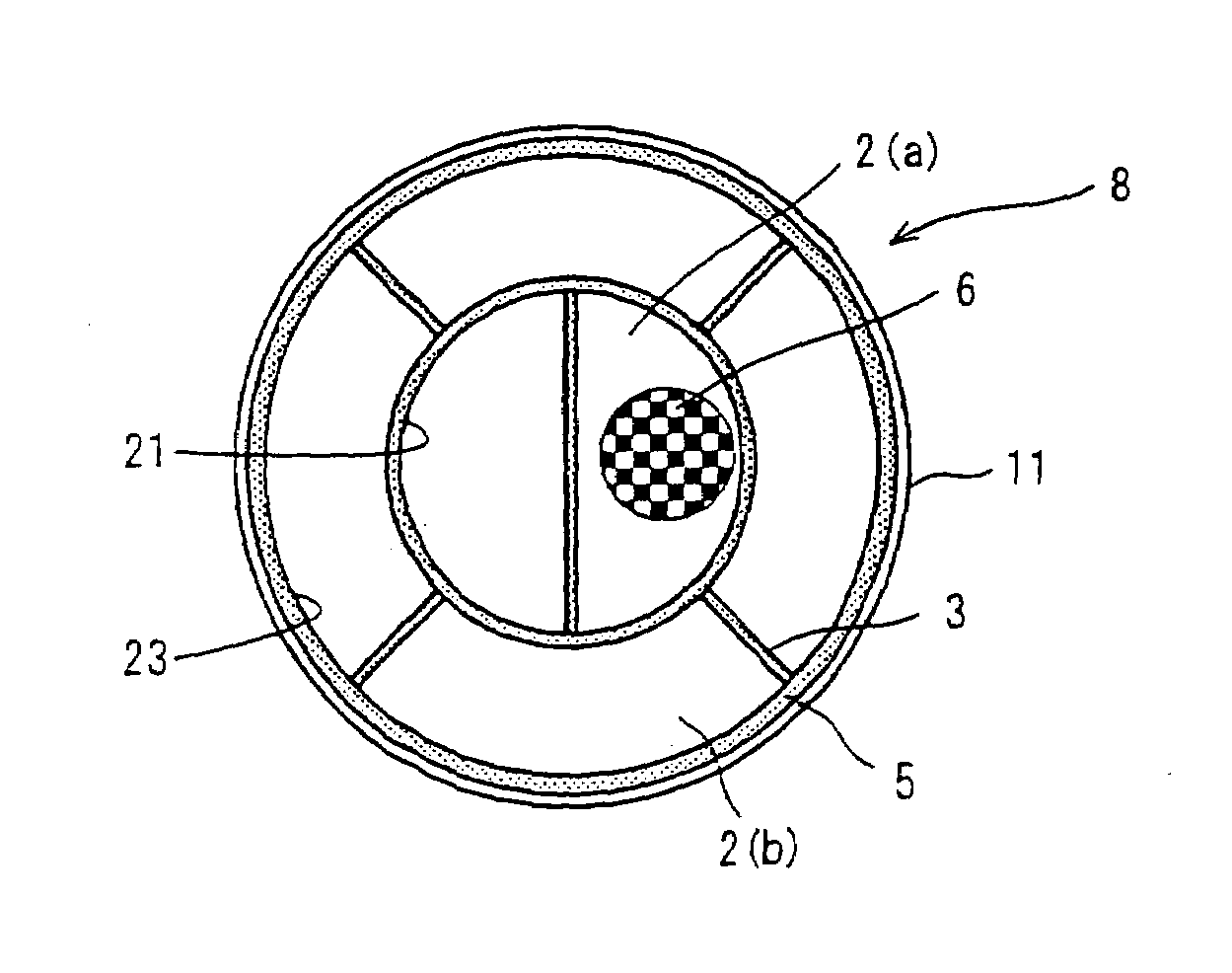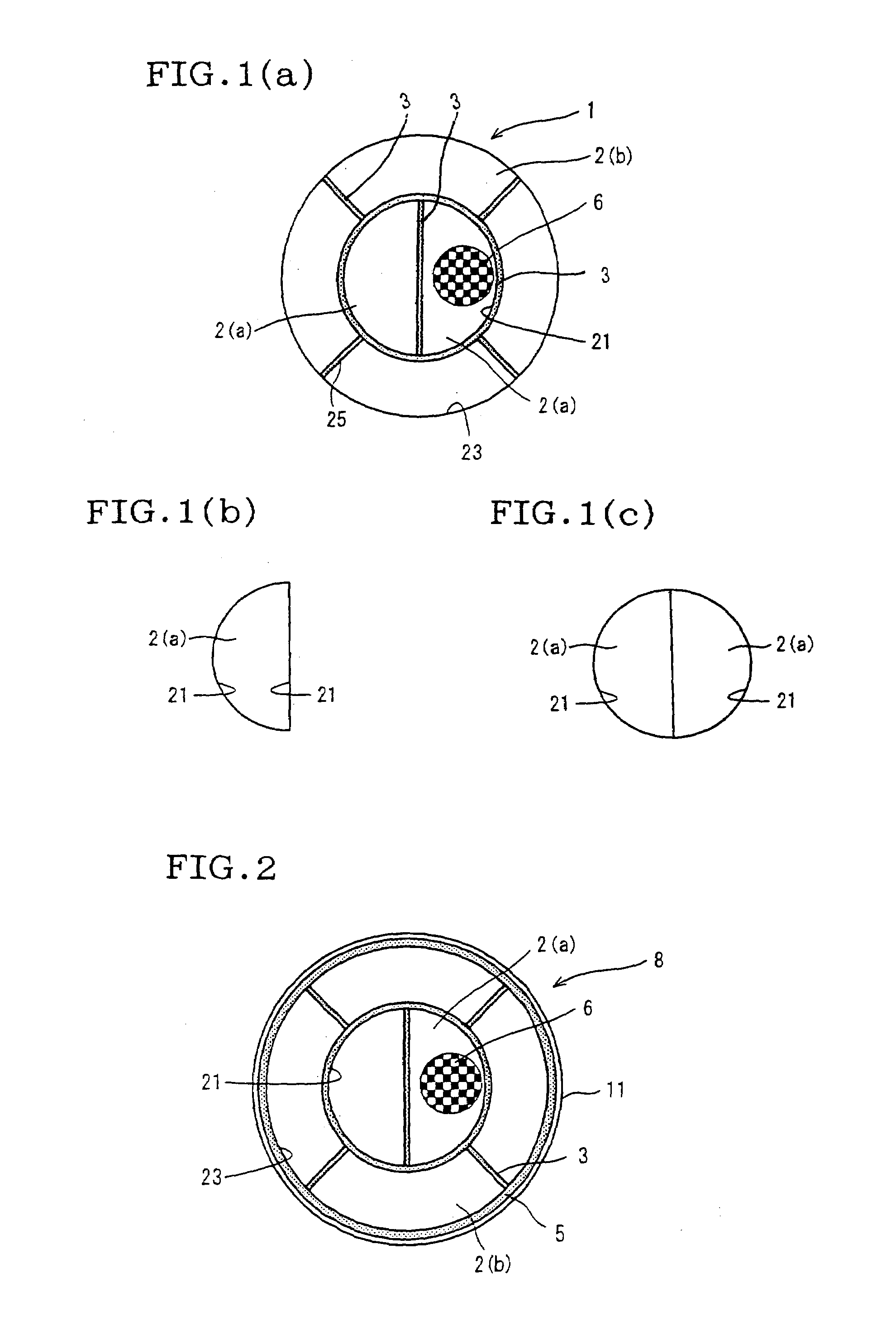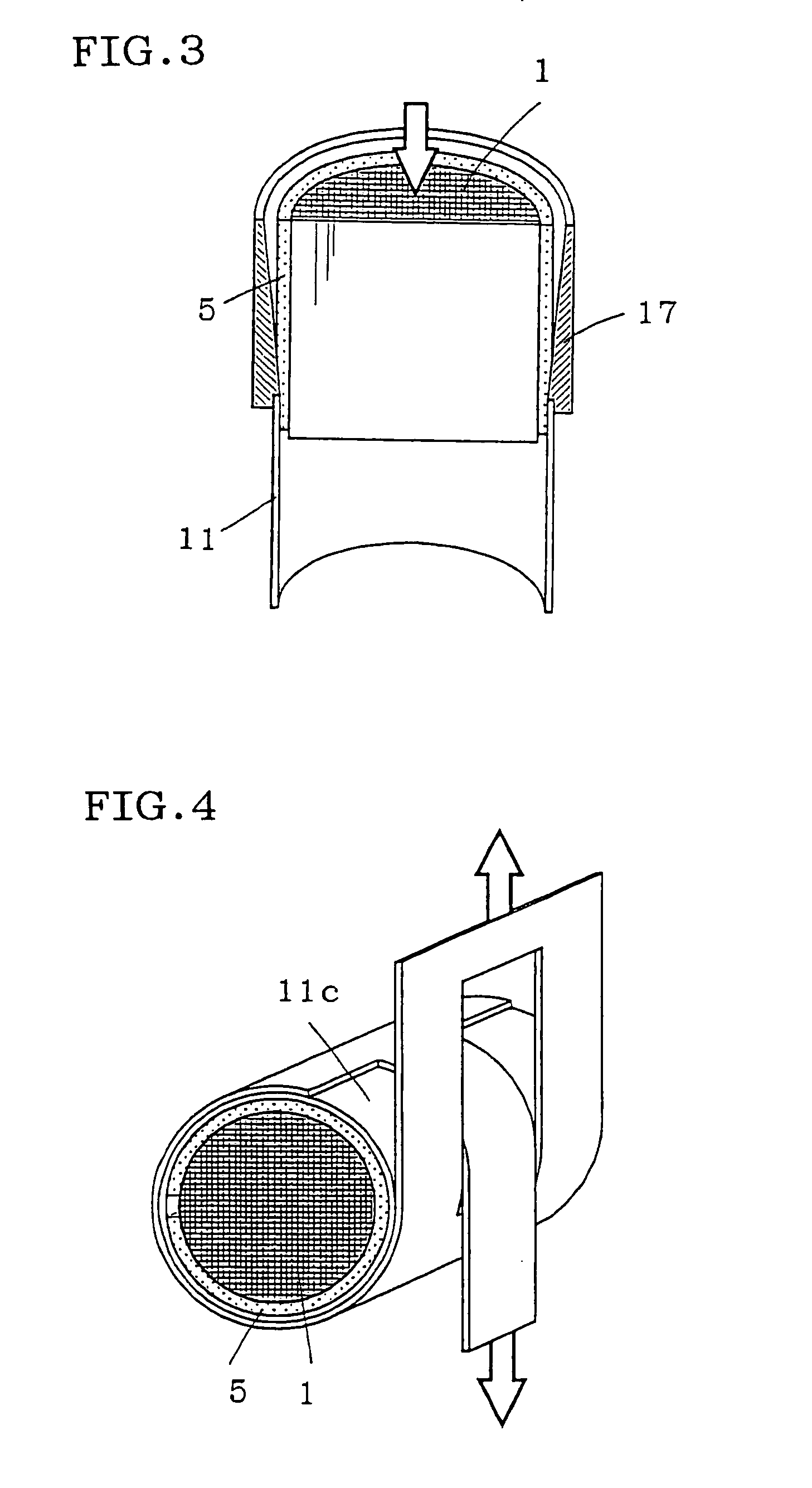Honeycomb structure and assembly thereof
a honeycomb and structure technology, applied in the field of honeycomb structure, can solve the problems of large thermal stress and cracks, non-uniform temperature distribution, and insufficient relaxation of stress applied thereto
- Summary
- Abstract
- Description
- Claims
- Application Information
AI Technical Summary
Benefits of technology
Problems solved by technology
Method used
Image
Examples
example 1
[0045]A silicon carbide powder was used as a raw material. Thereto were added methyl cellulose, hydroxypropoxyl methyl cellulose, a surfactant and water to prepare a plastic material. This puddle (mud) was subjected to extrusion molding, and the resulting extrudate was dried using a microwave and hot air.
[0046]Then, the passages of the extrudate were plugged alternately at each end face of the extrudate with a sealant made of the same material as for the honeycomb structure to be obtained, in such a way that each end face of extrudate had a checkerboard pattern appearance. Then, the resulting material was heated for debindering in a N2 atmosphere and then fired in an Ar atmosphere to obtain four honeycomb segments 2(b) having an outer diameter of 144 mm, an inner diameter of 73 mm and a length of 152 mm and two half-cylindrical honeycomb segments 2(a) having a diameter of 72 mm and a length of 152 mm. These six honeycomb segments 2(a) and 2(b) were bonded into one piece by providing...
example 2
[0047]The five honeycomb segments in total produced in the same manner as in Example 1 as shown in FIG. 9(b), i.e. two quadratic prism-shaped honeycomb segments 2(c) having a size of 30 mm×30 mm×152 mm, one honeycomb segment 2(d) and two honeycomb segments 2(e), were bonded using an adhesive 7 which was a mixture of colloidal silica, an alumina fiber and water, followed by drying, to produce four bonded honeycomb segments 9(a). Similarly, four quadratic prism-shaped honeycomb segments 2(c) having a size of 30 mm×30 mm×152 mm were bonded using an adhesive 7 which was a mixture of colloidal silica, an alumina fiber and water, followed by drying, to produce one bonded honeycomb segment 9(b), which does not constitute the outermost peripheral surface of the honeycomb structure. Then, the four bonded honeycomb segments 9(a) and the one bonded honeycomb segment 9(b) were bonded into one piece by providing a ceramic fiber-made non-intumescent mat 3 on the side surface 21 of the bonded hone...
example 3
[0048]Four bonded honeycomb segments 9(a) were produced in the same manner as in Example 2. Two quadratic prism-shaped bonded honeycomb segments 9(c) having a size of 30 mm×60 mm×152 mm, shown in FIG. 10(b), were produced by bonding two quadratic prism-shaped honeycomb segments 2(c) having a size of 30 mm×30 mm×152 mm using an adhesive 7 which was a mixture of colloidal silica, an alumina fiber and water, followed by drying the bonded material. These six bonded honeycomb segments 9(a) and 9(c) were bonded into one piece by providing a ceramic fiber-made non-intumescent mat 3 on the side surfaces 21 of the bonded materials 9(c) and at the space between the side surfaces 25 of each two adjacent bonded materials 9(a) and using a double sided tape, to obtain a honeycomb structure 1 show in FIG. 10(a). The same ceramic fiber-made non-intumescent mat as mentioned above was wound around the outermost peripheral surface 23 of the honeycomb structure 1; the resulting material was stuffed in ...
PUM
| Property | Measurement | Unit |
|---|---|---|
| thickness | aaaaa | aaaaa |
| length | aaaaa | aaaaa |
| diameter | aaaaa | aaaaa |
Abstract
Description
Claims
Application Information
 Login to View More
Login to View More - R&D
- Intellectual Property
- Life Sciences
- Materials
- Tech Scout
- Unparalleled Data Quality
- Higher Quality Content
- 60% Fewer Hallucinations
Browse by: Latest US Patents, China's latest patents, Technical Efficacy Thesaurus, Application Domain, Technology Topic, Popular Technical Reports.
© 2025 PatSnap. All rights reserved.Legal|Privacy policy|Modern Slavery Act Transparency Statement|Sitemap|About US| Contact US: help@patsnap.com



